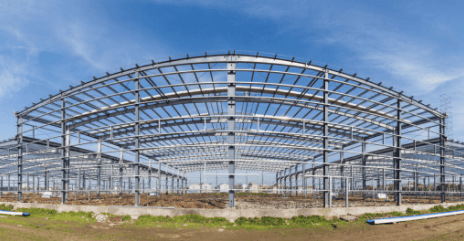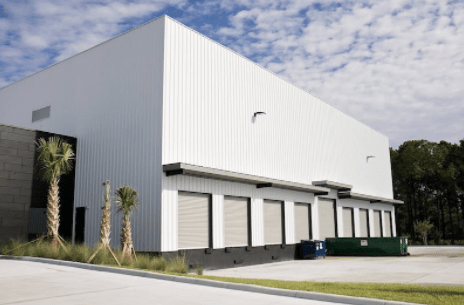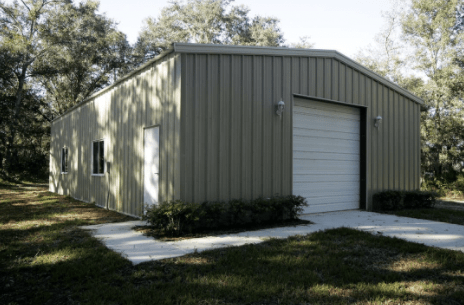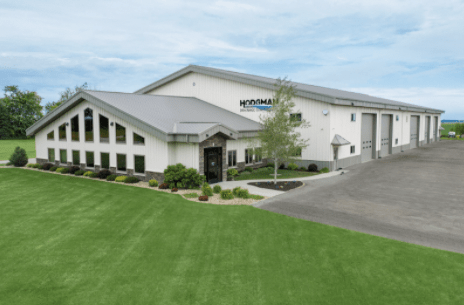The versatility of steel building sizes allows builders and architects to construct metal warehouses, churches, barns, gyms, breweries, office buildings, and more. Contractors and architects can design steel structures to meet their clients’ exact needs and local codes. In addition, self-supporting steel buildings allow for complete interior design freedom and floor plan selection, and they are easily adaptable as a business grows and evolves.
Once you determine your metal building size and specifications, an architect and contractor can efficiently and quickly design and build high-quality industrial, commercial, agricultural, and other steel structures.

What Size Metal Building Do You Need?
To determine the metal building size you need, you must carefully and specifically consider how you plan to use the building now, and in the future. With that information, an architect and builder can help you plan the square footage, width, length, height, and roof slope to optimize your building’s productivity, efficiency, and financial success and accommodate the site and zoning.
To accommodate future growth, you should consider increasing the size of your new metal building or addition. Typically, standard metal building sizes come in 10s, like 50’ x 100’. Common steel building sizes include 50’ x 100’, 30’ x 40’, 60’ x 120’, and 60’ x 40’, or you can get custom dimensions.

How Much Square Footage Does Your Steel Building Need?
The square footage of a steel building includes the outside dimensions of the steel, not the inside space used to estimate a home’s square footage. The strength of steel allows builders to construct large buildings with no internal support column for the roofs (clear span), so you can maximize floor space compared to structures requiring support columns.
However, multi-span (modular) steel building designs, with interior columns, allow for greater width and square footage, and allow for reduced building cost — a good option if the interior columns won’t impede the structure’s productivity.
The Best Length for a Steel Building
You can design the long side of a metal building to any length. The most cost-effective way to design steel buildings involves maximizing the length and minimizing the width of a steel building. For instance, adding 20 feet in length to a building only requires an extra frame line to the end of the structure, which is a relatively inexpensive addition.
By choosing load-bearing end walls, you can quickly and inexpensively expand the length of a steel building as your business grows.

Determining Steel Building Widths
Minimizing the short side of a steel building (width) can reduce construction costs, but increasing the width may significantly increase the cost of your steel building. For example, adding 20 feet to the width of a steel building will widen the structure along the entire length, requiring you to lengthen each supporting rafter by 20 feet. Furthermore, you must increase every support rafter to support the increased roof load.
Deciding on a Metal Building Height
To determine the height of a steel building, measure from the top of the eaves, not the ceiling’s peak. Local codes and the building’s needs usually determine its height. However, the building’s eave height must be +/-2-feet higher than the tallest framed opening.
Multiple-story steel buildings add significant loading characteristics and considerable expense to the building costs. Therefore, adding square footage at the ground level to a low-rise or single-story building can tremendously reduce the cost to build steel structures more than multi-story buildings.
Adding Space with High Roof Pitch
The steel building’s roof pitch design depends on the space needed in the room’s center. Many steel buildings come with flat roof pitches of 1:12 (1-foot rise for every 12 feet of length), making the structures easier to cool and heat. However, selecting the more costly gable-style roof with a pitch of 4:12 creates valuable space and allows snow and water to shed more easily.
Why Design Your Steel Building with Allied Steel Building?

Allied Steel Buildings has a quick, economical, and versatile solution to constructing durable and sustainable agricultural, commercial, industrial, storage, multi-use, medical, and residential structures – of any size.
- Building with a prefab Allied Steel building kit reduces construction time. We completely engineer and fabricate the structure at the factory, and deliver it to the site within weeks of the design’s final approval. In addition, off-site manufacturing guarantees controlled manufacturing conditions, ensuring a consistent and predictable product.
- Pre-engineered buildings keep prices low with efficient design and manufacturing processes. In addition, the lightweight prefab components lessen shipping costs. Pre-engineered systems save on labor and construction costs because they arrive at the job site with pre-cut holes, pre-welded clips, and the necessary hardware for quick and straightforward installation.
- Allied Steel Buildings allow for easy expansion and adaptability as a company grows or shifts directions.
- Durable steel buildings maintain their strength and integrity for their lifespan because they resist common causes of deterioration (mold, termites, moisture), and stand up to natural disasters more effectively than wood and concrete buildings. This feature can also lower insurance premiums on the building.
- Allied Steel Buildings uses recycled content, making our products perfect for green construction.
Call us at 1.877.997.8335 or fill in our contact form today, and our knowledgeable building experts will help you determine what size metal building you need. They can also help to quickly and happily price your building.


